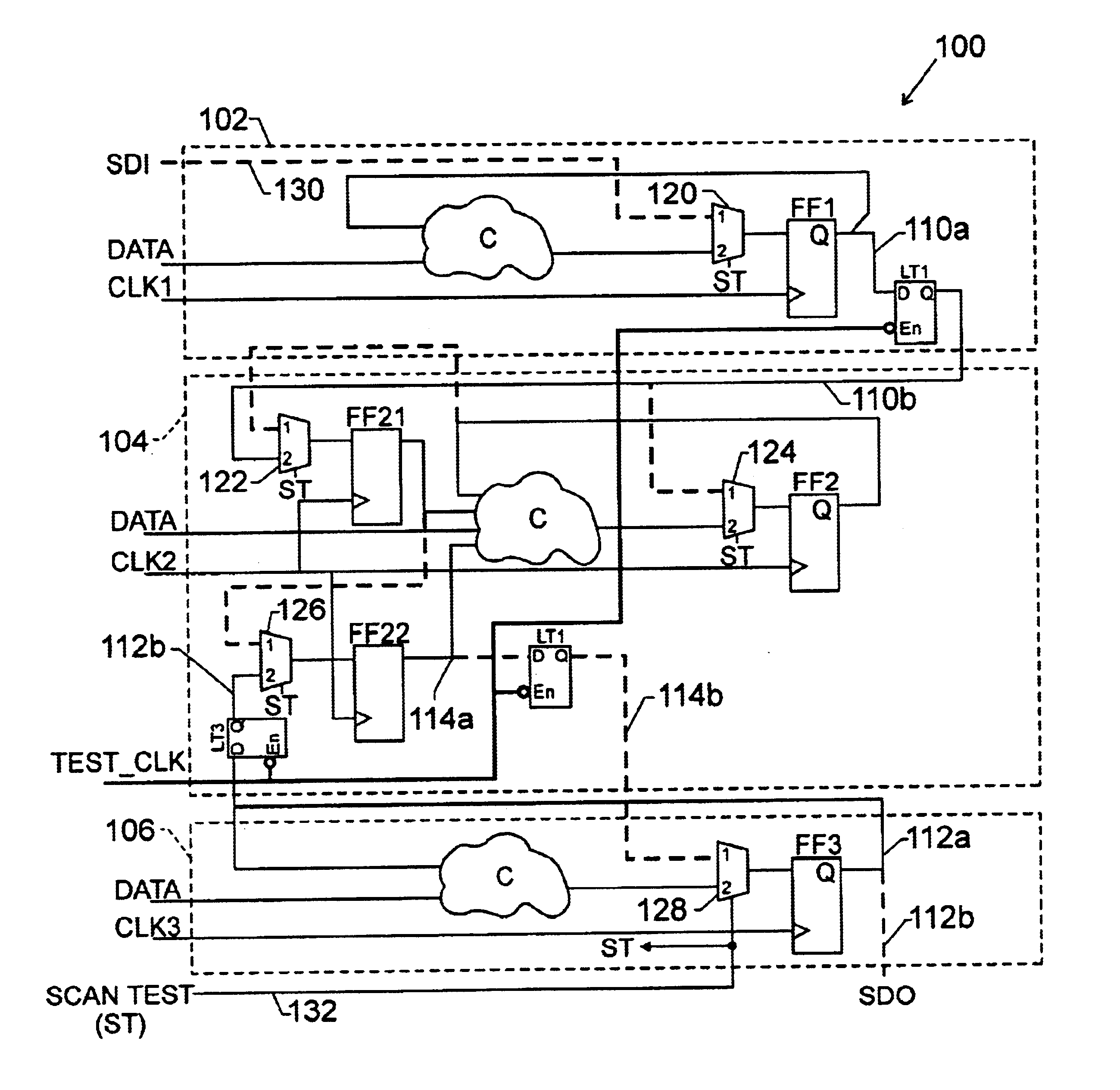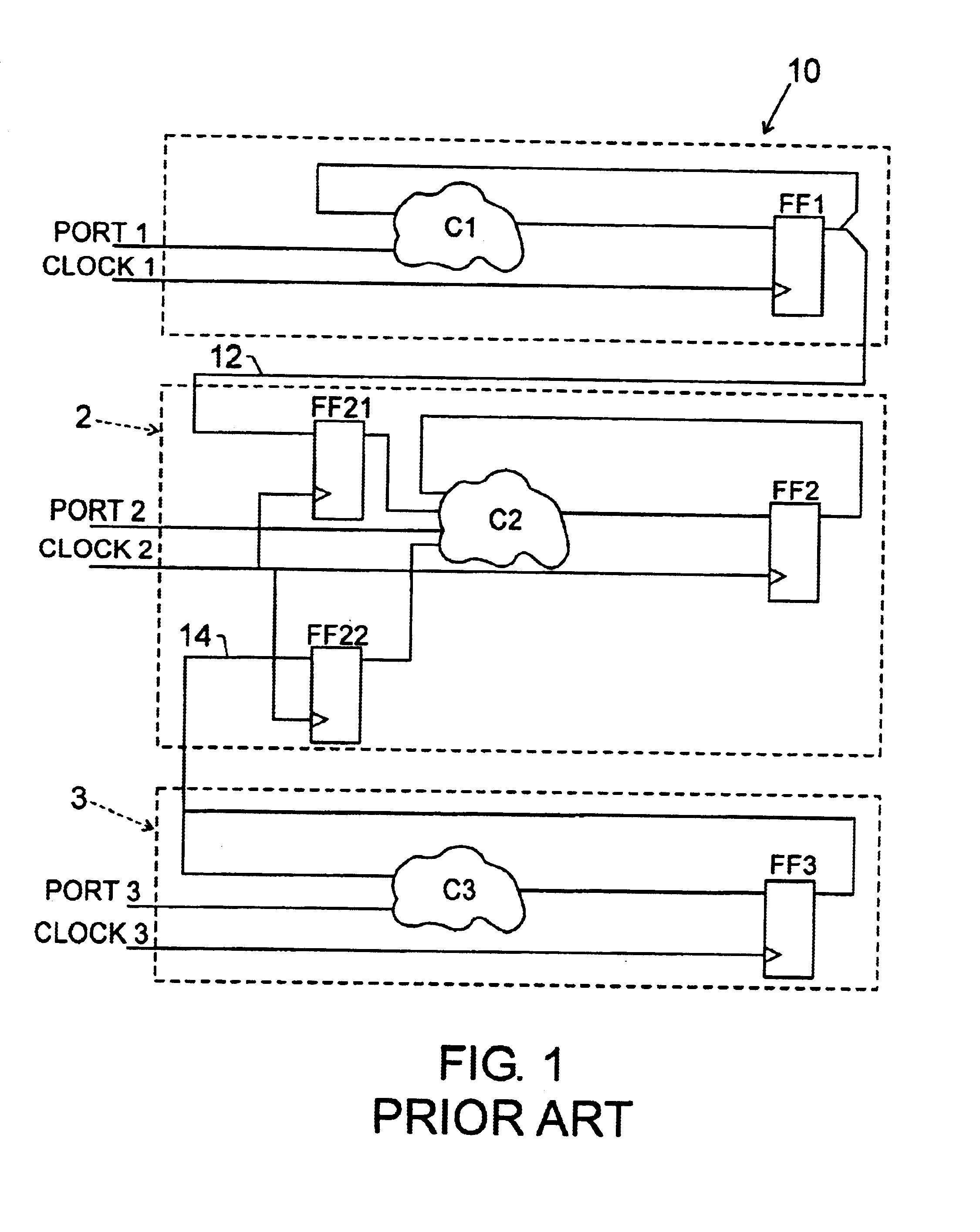Deterministic testing of edge-triggered logic
- Summary
- Abstract
- Description
- Claims
- Application Information
AI Technical Summary
Benefits of technology
Problems solved by technology
Method used
Image
Examples
Embodiment Construction
[0034]Turning now to FIG. 3, there is illustrated the circuit 100, which is, in effect, a modified version of the circuit 10′ of FIG. 2, incorporating an embodiment of the present invention. As FIG. 3 shows, the circuit 100 includes, as did circuit 100, three clock domains 102, 104, and 106. Each clock domain includes data (DATA) and clock (CLK) inputs, combinatoral logic C, and representative clocked, edge-triggered devices such as the flops FF1 (clock domain 102), F2, FF21, and FF22 (clock domain 104), and FF3 (clock domain 106). Multiplexers 120, 122, . . . , 128 are provided in the circuit 100 to allow formation of a selectable scan path between an SDI input on signal line 130 to a SDO output line 112b in response to assertion of a test signal (SCAN TEST (ST) on signal line 132.
[0035]When operating normally (i.e., in its functional state), data produced by the flop FF1 of clock domain 102 is communicated from its Q output to the clock domain 104 (as well as back to the combinato...
PUM
 Login to View More
Login to View More Abstract
Description
Claims
Application Information
 Login to View More
Login to View More - R&D
- Intellectual Property
- Life Sciences
- Materials
- Tech Scout
- Unparalleled Data Quality
- Higher Quality Content
- 60% Fewer Hallucinations
Browse by: Latest US Patents, China's latest patents, Technical Efficacy Thesaurus, Application Domain, Technology Topic, Popular Technical Reports.
© 2025 PatSnap. All rights reserved.Legal|Privacy policy|Modern Slavery Act Transparency Statement|Sitemap|About US| Contact US: help@patsnap.com



